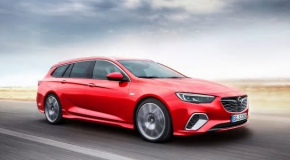
The electric vehicle (EV) landscape is growing fast, and by 2025, we’ll see some noticeable changes driven by technological advances and the spread of charging infrastructure. From the rise of ultra-fast chargers to the convenience of home charging solutions, the industry is on the move. However, growing pains are inevitable, especially when it comes to the cost of building and maintaining this infrastructure. For businesses and individuals looking to invest, understanding the cost of installing commercial chargers in the UK has become crucial.
The Expansion of Fast Charging Networks
One of the most exciting trends we’re likely to see in 2024 is the accelerated rollout of ultra-rapid chargers. These chargers drastically reduce the time it takes to power up your EV, making them perfect for long-distance travelers who need quick top-ups. With more consumers turning to electric vehicles, industry leaders are working hard to install more high-power AC and DC chargers to meet this demand.
Home Charging: Still the Top Choice
Despite the growing number of public charging stations, most EV owners still prefer the convenience and lower cost of charging at home. Advances in energy management systems, which help homeowners charge their EVs when electricity prices are low, have made this option even more attractive. For those with private parking, home charging remains the most popular—and likely will continue to dominate in 2024.
New Tech on the Horizon
Exciting developments like wireless charging, battery swapping, and even mobile charging stations are being explored to improve the EV charging experience. For instance, some cities are testing wireless chargers that allow vehicles to power up without a physical connection. Battery swapping, already popular for two-wheelers in countries like India, could soon catch on for larger vehicles as well.
The Rise of Vehicle-to-Grid (V2G) Technology
One of the most promising developments in EV charging is Vehicle-to-Grid (V2G) technology. This allows EVs to not only draw power from the grid but also send energy back during peak demand times. In the coming years, V2G could help balance electricity grids while providing EV owners with a new source of passive income. With V2G adoption predicted to grow by 45.6% between 2023 and 2032, it’s a development to keep an eye on.
Battery Swapping Gains Momentum
In countries like India and regions across Africa, battery swapping has emerged as a practical alternative to traditional charging, especially for two-wheelers. This trend may soon expand to other markets, particularly where traditional charging infrastructure is less developed. Instead of waiting for a charge, drivers can simply swap out their depleted battery for a fully charged one, saving time and effort.
Bringing Charging to Rural Communities
While much of the focus has been on building EV infrastructure in cities, rural areas are beginning to receive more attention. As EV ranges increase and new models become more practical for rural settings, expanding the charging network to these areas will be crucial. For companies in the EV charging industry, this is a huge opportunity to stand out by serving underrepresented communities.
Advances in Battery Technology
Battery technology is also moving forward, with innovations like solid-state and semi-solid-state batteries offering improved efficiency and lifespan for EVs. These new batteries not only perform better but also come with environmental benefits, making them a likely target for government incentives and increased consumer interest.
Streamlined Payment Options
One of the simpler but important improvements in 2024 will be the standardization of payment methods at charging stations. In Europe, new regulations will require fast chargers to accept standard bank cards, eliminating the need for special apps or accounts. This move will make the entire process more convenient and could help increase EV adoption.
The Growing Role of Manufacturers
Original Equipment Manufacturers (OEMs) are playing an increasingly large role in building EV charging infrastructure, especially in developing countries. In places like China, India, and the Middle East, OEMs are not just selling cars but also creating branded charging networks. These networks are likely to become key factors influencing consumer decisions when purchasing electric vehicles.
The Sharing Economy Meets EV Charging
Another exciting trend is the growing popularity of sharing privately owned EV chargers. Think of it like “Airbnb for EV charging.” By sharing chargers, private owners can help solve the infrastructure problem, especially in areas where public stations are scarce. This could significantly broaden the range of available charging options as EV ownership continues to rise.
New Incentives and Regulations
Governments around the world are introducing new policies and incentives to speed up the adoption of EV infrastructure. In the EU, for instance, current regulations require fast chargers to be available every 60km on major roads. Meanwhile, the U.S. is focusing on both public and private sector partnerships to boost charging networks.
Infrastructure Challenges and Opportunities
While the future of EV charging looks bright, challenges remain. High upfront costs for ultra-fast chargers, the need to upgrade power grids, and uneven access to charging across different regions are all hurdles that need to be addressed. Governments, energy companies, and businesses will need to work together to solve these problems and ensure the infrastructure keeps pace with EV adoption.
International Cooperation is Key
To build a truly global EV charging network, international collaboration will be essential. Cross-border initiatives are already underway to standardize charging methods and create policies that encourage EV use. In the coming years, we can expect even more cooperation to ensure a seamless, international EV charging system.
Looking Ahead
As we move into 2024, it’s clear that EV charging infrastructure will continue to grow and evolve. With ongoing innovations in technology, the expansion of charging networks, and supportive government policies, the future of EVs looks promising. The key challenge will be building a robust, efficient, and widely accessible charging infrastructure that meets the needs of all stakeholders—from individual EV owners to large fleet operators.
Conclusion:
EV charging landscape in 2024 will be shaped by rapid development, exciting technological advances, and a few growing pains. Building a sustainable future for electric vehicles will require everyone—governments, businesses, and consumers—to work together and tackle these challenges head-on.
















